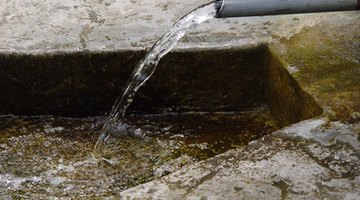How Does a Water Transfer Pump Work?
Water transfer pumps create a difference in pressure, which moves fluid from one location to another. They are used for emptying waterbeds, draining water heaters and several other plumbing applications ranging from low capacity residential use to high volume industrial use.

Power Sources
Transfer pumps receive power from a battery, generator or other electrical source, and this power creates the force necessary to move fluid through the pump. The fluid is transferred to another location, which may be a tank, drainage area or body of water depending on the type of fluid.
Flammable Fluid Drainage

Flammable fluids such as gasoline, oil or chemicals require specialized or multi-use transfer pumps that are capable of handling damage to pump components. These transfer pumps are treated with corrosion-resistant materials, and pressure is closely gauged to ensure safety and efficiency. These types of pumps are often used on construction sites and rigs, and by mechanics to change the oil in an automobile.
Dewatering Systems

Water transfer pumps are used for irrigation, lawn sprinkling and air conditioning. These pumps are internally connected to the water transfer system and turn on when the system is activated, either manually or automatically. Water is then pumped through piping until it reaches the atmosphere. This type of pump is also used to remove wastewater and stormwater runoff.
References
Writer Bio
A copywriter and publicist, Brooke Ashley has been writing professionally since 1998. Her poetic work has been published in "Maverick Magazine" and her Web content is featured on Autogeek.net. Ashley earned her Bachelor of Arts in creative writing from the State University of New York at New Paltz.
Photo Credits
- boat image by pearlguy from Fotolia.com
- boat image by pearlguy from Fotolia.com
- water pump image by astoria from Fotolia.com
- Sprinklers image by Paweł CYGAN from Fotolia.com
More Articles



